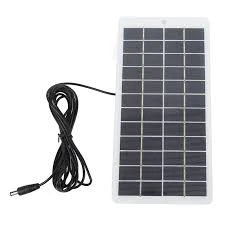solar array sizing
Solar Array Sizing An Essential Guide for Optimal Energy Production
In the quest for sustainable energy solutions, solar power has emerged as a leading contender. However, the effectiveness of a solar energy system is significantly dependent on properly sizing the solar array. Solar array sizing involves determining the optimal size and capacity of the solar panels required to meet a specific energy demand. This process can be crucial for ensuring efficient energy production and maximizing return on investment.
To begin with, the first step in sizing a solar array is assessing the energy needs of the property. This is typically measured in kilowatt-hours (kWh) per month. Homeowners or businesses should review their electricity bills from the past year to understand their average energy consumption. Key factors influencing energy needs include the number of occupants in a building, the types of appliances used, and seasonal variations in energy usage. Understanding these patterns helps in estimating the total energy required from the solar system.
Once the energy needs are established, the next step is to consider the solar insolation levels in the area where the solar array will be installed. Solar insolation is a measure of how much solar energy is available at a specific location, typically expressed in peak sun hours per day. This information can often be obtained from solar maps or local weather stations. Regions with higher sun exposure will require a smaller array to meet the same energy needs compared to areas with lower sunlight availability.
solar array sizing

Next, prospective solar installers should account for the efficiency and specifications of the solar panels being considered. Solar panels come with different efficiency ratings, usually ranging from 15% to over 20%. Higher efficiency panels can produce more power in a smaller area, which can be an advantage for properties with limited roof space. However, these panels can also be more expensive. Thus, a balance must be struck between budget and efficiency to ensure the solar array is both effective and cost-efficient.
The system’s orientation and tilt also play a crucial role in solar array sizing. Ideally, solar panels should be positioned to maximize sunlight exposure throughout the day, typically facing south in the Northern Hemisphere and north in the Southern Hemisphere. The tilt angle of the panels should also be adjusted based on seasonal changes to capture the most sunlight. Accurate positioning can significantly affect the solar array's overall performance and energy production capabilities.
Lastly, it is vital to factor in system losses, including shading, inverter efficiency, and temperature effects. Shading from trees or buildings can significantly diminish output, so careful site analysis is necessary. Inverter losses occur when converting direct current (DC) produced by the panels to alternating current (AC), which is used in homes. Adjusting for these losses will provide a more accurate estimation of the required solar array size.
In summary, properly sizing a solar array requires careful consideration of various factors, including energy consumption patterns, local solar insolation, panel efficiency, optimal orientation, and potential system losses. Taking the time to address these elements can lead to an effective solar energy system that not only meets energy needs but also maximizes savings and environmental benefits. As we transition towards a more sustainable future, understanding solar array sizing becomes increasingly vital for homeowners and businesses looking to embrace renewable energy solutions.
-
String Solar Inverter: The High-Efficiency Solution for Smart Solar EnergyNewsJul.14,2025
-
Revolutionizing Rooftop Energy with the Power of the Micro Solar InverterNewsJul.14,2025
-
Power Independence with Smart Off Grid Solar Inverter SolutionsNewsJul.14,2025
-
On Grid Solar Inverter: Powering the Future with Smart Grid IntegrationNewsJul.14,2025
-
Monocrystalline Solar Panels: High-Efficiency Power for the Future of Clean EnergyNewsJul.14,2025
-
Bifacial Solar Panel: A Smarter Investment for Next-Generation Energy SystemsNewsJul.14,2025







